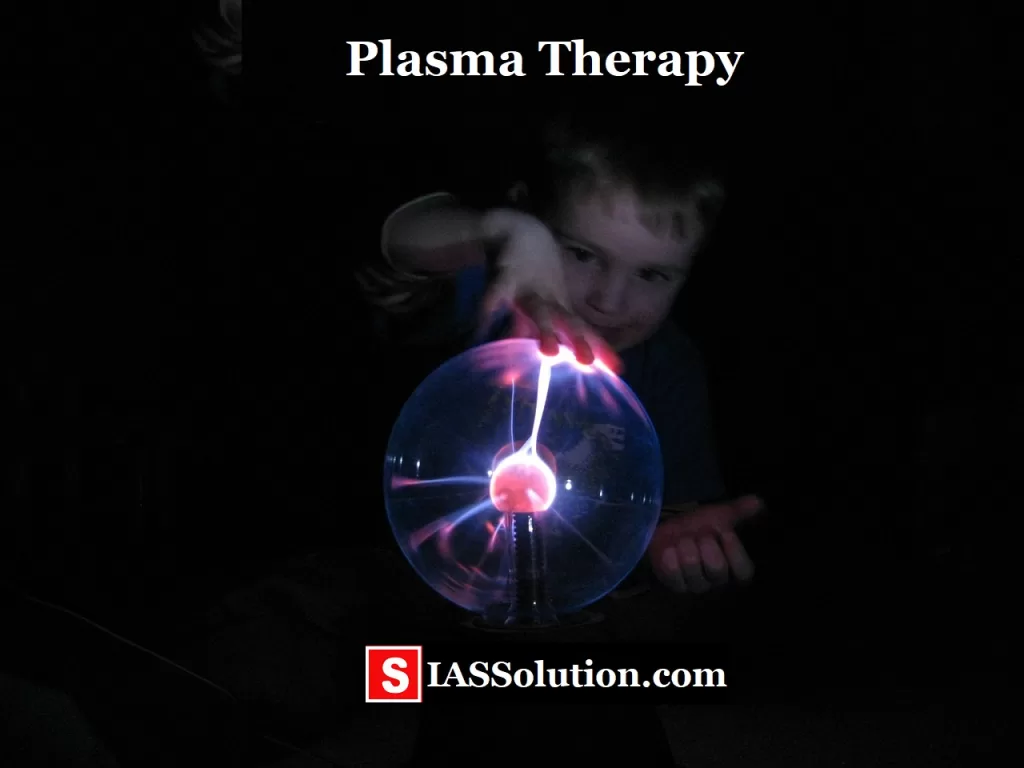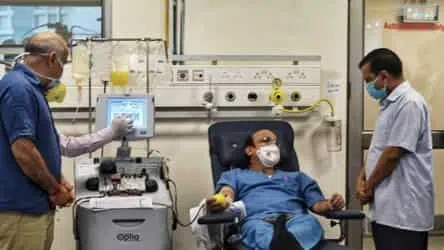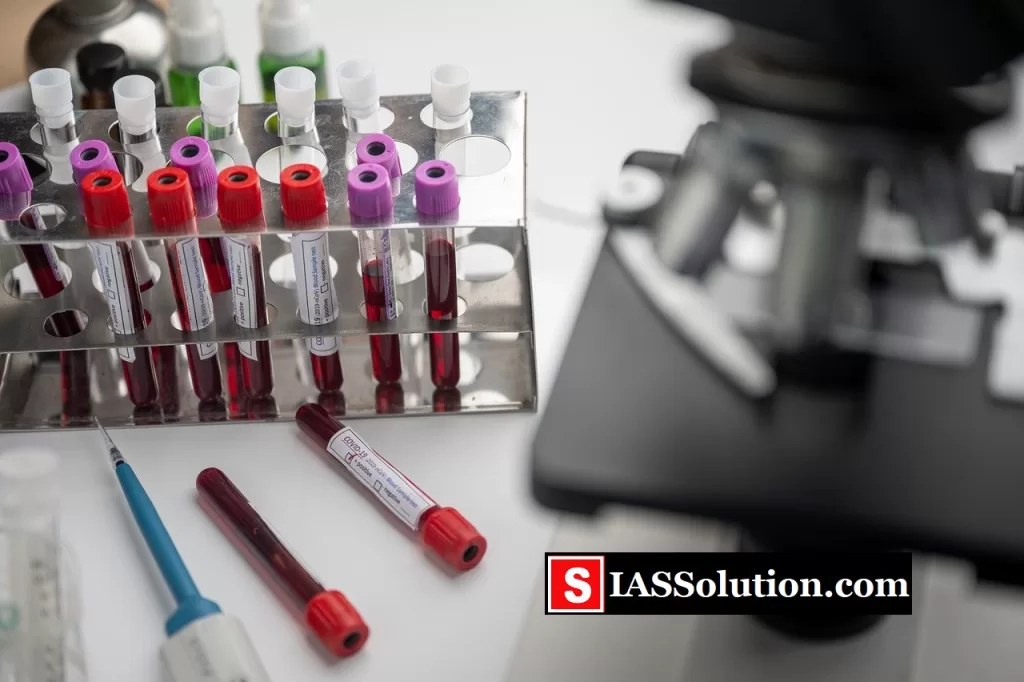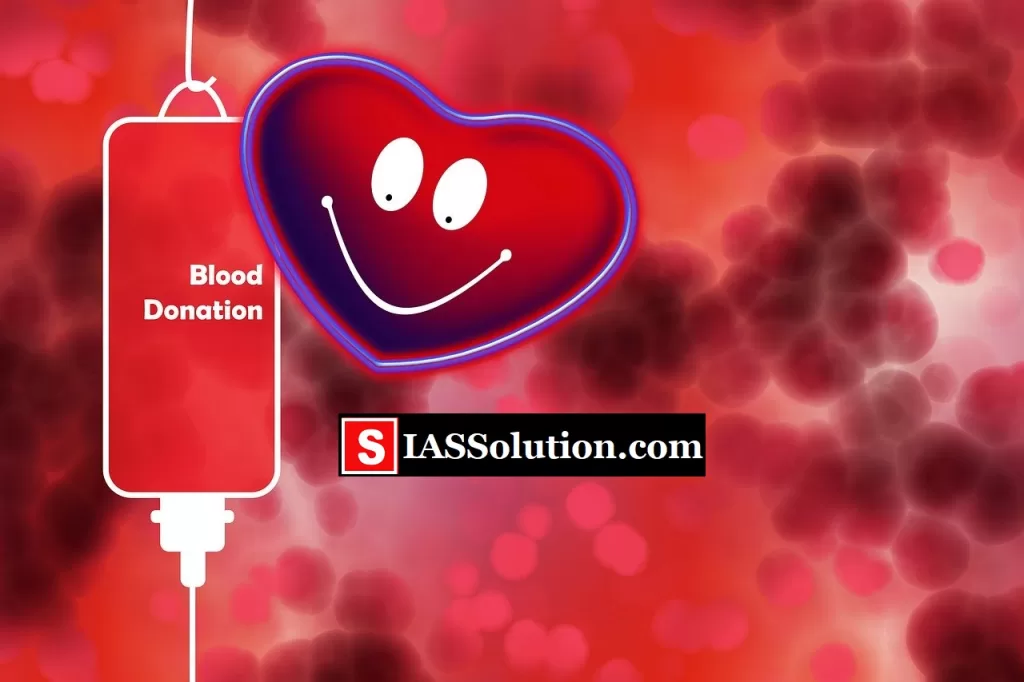Plasma Therapy and Plasma Bank – All you need to Know
 The Covid-19 pandemic continues to bleed humanity with over 500,000 deaths. One therapy that has shown promise against Covid-19, is the Convalescent Plasma Therapy (CPT). Several World Health Organization (WHO Solidarity Trial) sponsored and State-led trials to fight against the pandemic are in the process. Amid this India has moved ahead in the direction of using Plasma Therapy. So how does the CPT work? Easy; CVT basically raises the immunity of a patient by infusion of some of the blood plasma of a person who has recovered from Covid-19. This is called convalescent plasma therapy.
The Covid-19 pandemic continues to bleed humanity with over 500,000 deaths. One therapy that has shown promise against Covid-19, is the Convalescent Plasma Therapy (CPT). Several World Health Organization (WHO Solidarity Trial) sponsored and State-led trials to fight against the pandemic are in the process. Amid this India has moved ahead in the direction of using Plasma Therapy. So how does the CPT work? Easy; CVT basically raises the immunity of a patient by infusion of some of the blood plasma of a person who has recovered from Covid-19. This is called convalescent plasma therapy.
This article will primarily help in understanding CVT and issues related to it
What exactly is Convalescent Plasma Therapy?
- Convalescent plasma therapy basically involves introduction (Transfusion) of the blood plasma of a recovered patient into another patient.
- Plasma is the fluidic matrix in which blood cells flow. It is also home to the crucial elements of immunity known as antibodies.
- Antibodies are the first line of defence against an invading pathogen i.e. an antigen. The primary aim of the antibodies is to defeat the antigen.
- Once that is done, some blood cells start to perform the role of memory cells so that they can identify and defeat the enemy organism if they invade again, by quickly producing the same antibodies.
- So fundamentally, Convalescent plasma therapy relies on the old concept of passive immunity that we see in vaccines. Passive immunity is simply an acquired immunity. For example Diphtheria, antibodies for which were developed in horses and injected into humans. This process resulted in the creation of immunity in humans.
- While, Active immunity is basically, the introduction of an attenuated pathogen (Example a Hepatitis or BCG vaccine) into the body to generate an immune response.
So, How is Passive Immunity developed?
- By infusion of antibodies, activated T cells, or both in a person. All of which can be obtained from the blood of a recovered patient or an animal that has been immunised against the antigens.
- These antibodies last for two-three weeks during which they protect the person against the invading disease.
- Activated T cells last for a few weeks if they are transfused from a person. And, few hours to a few days if transfused from an animal.
- Such transfusion of antibodies/lymphocytes to create immunity is Passive immunity.
- T-cells are basically blood cells that play an active role in immunity.
And, how does a vaccine work?
A vaccine essentially prepares the body’s immune system to recognize antigens, which in turn, tell our body to start an immune response. One way to prevent a disease is to stop the virus from entering the cells. Vaccines do that by training the body to identify, recognize, and attack the virus before it can infect healthy cells.
There are different types of vaccines like Attenuated Viral Vaccine, RNA Vaccine, Monoclonal Antibody Vaccine, etc.
Attenuation or inactivation means, taking an infectious agent (Virus or bacteria, etc) and modifying it, to make it weaker or less harmful. In Attenuated Viral Vaccine, the modification of the virus is such that its toxicity reduces but ‘Antigenicity’ remains.
Exposing the body to a much weaker virus does not overburden the immune system. The body soon develops a strong immune response against a weaker enemy. As a result of this body’s immune system is in a better position to fight the disease when a stronger invasion happens.
What are India’s Plans?
The country’s apex medical research organization, Indian Council of Medical Research (ICMR), is in the process of framing a protocol for CVT. The protocol will deal with an infusion of blood plasma from persons who recovered from COVID-19 into serious patients.
Initially, clinical trials on severe patients shall take place. After that, the Drug Controller General of India (DGCI) will give approval for the same. ICMR believes that this is not for use in all patients but will be used on a trial basis.
What do the other countries say?
- The US Food and Drug Administration (FDA) gave a green signal to the CVT for in a regulated way like clinical trials etc
- Germany, UK, France have given approvals for the usage of CVT in clinical trials.
- China has been using CVT to cure patients since January 2020.
Has it been tried before?
Yes, it has been tried before for several diseases, most recently for Ebola. In the wake of the Ebola outbreak, WHO had issued a detailed guidance document for its use, as an “empirical treatment modality”. As there was no proven treatment available for Ebola virus disease (EVD), WHO had to use Plasma therapy as an empirical treatment modality,
India’s First Plasma Bank

Plasma Bank Inauguration by Kejriwal. Image Credit: Google
On July 2, 2020, Delhi Chief Minister Arvind Kejriwal inaugurated India’s first plasma bank at the Institute of Liver and Biliary Sciences (ILBS). The purpose of the bank is to ease access to plasma that is being used as a trial to treat Covid-19 patients. The bank will also coordinate with the patients who have recovered from Covid-19.
What is Plasma Bank?
- A plasma bank works like a blood bank. It has been created particularly for Covid-19 patients, who have been advised the therapy by doctors. It is established at ILBS New Delhi, which will also be the nodal centre for the collection of plasma.
- Seven hospitals in New Delhi will conduct these trials on Covid-19 patients. These are:-
- All India Institute of Medical Sciences (AIIMS) New Delhi.
- Ram Manohar Lohia (RML) Hospital
- Indraprastha Apollo Hospital,
- Maulana Azad Medical College (MAMC),
- Batra Hospital
- Lady Hardinge Medical College
- Max Hospital Saket.
Why was it set up?
- The demand for plasma among the patients was rising as the cases increased. This pushed the government to set up a one-stop centre for the donors.
- Due to the unavailability of Plasma, the patient’s attendants were facing tremendous difficulties in search of plasma from a recovered patient.
- Also, Donors as well as attendees of patients were reluctant to step inside Hospitals where Covid-19 patients were treated.
- Therefore it was important to set the Plasma Bank at a non-COVID-19 Centre.
Who can Donate Plasma?
So can anybody Donate Plasma? Well, the answer is No. There is a strict eligibility criterion for donations.
- Those patients, who have recovered from the disease 14 days before the donation, will be considered for donation. Doctors are ideally suggesting a gap of 21 days between recovery and donation.
- People between the ages of 18 and 60, and weighing more than 50 kg are eligible.
- Pregnant women or women who recently delivered are not eligible. The reason being, the antibodies they produce during pregnancy, if exposed to the blood of the foetus, can affect the functioning of the lungs.
- People with co-morbidities such as diabetes, hypertension, cannot donate.
- Also, the donor has to undergo a complete medical check-up before the donation. A doctor at the center, will examine the detailed medical history of the donor and conduct a physical examination of Weight, Height, Blood Pressure, etc.
- Moreover, only a few recovered patients are able to create an adequate amount of plasma for donation, not all recovered patients can donate.
The strict eligibility criterion is one of the reasons that inadequate plasma is available for existing patients. By the end of June 2020, the recovered patients in Delhi were around 63,000, around 21,000, two weeks ago, and about13,000 three weeks ago.
What Tests are done before doing Plasma Therapy?
- Serum protein and CBC,
- TTI testing for hepatitis B virus, hepatitis C virus, HIV, malaria, and syphilis — and for blood grouping and antibody screening.
- Serum Covid-19 specific IgG antibody concentration higher than 80 is preferred.
One Person’s Plasma can help how many people?
Each sample of plasma can treat only 2 patients. The bank will collect 500 ml of plasma, depending on the weight of the person.
How does Plasma Therapy differ from Blood Donation?
- Blood contains several components, including RBCs, platelets, WBCs, and plasma. During a blood donation, donors typically donate a pint of blood at one go. Thereby also donating the blood cells and other components present in the blood.
- Unlike blood donation, in plasma donation, only plasma extractions take place and the other components of blood are put back in the body.
- The separation of plasma from other components of the blood is known as Apheresis. During which, the machine selectively retains the plasma and return all RBCs, WBCs, and other components of blood.
- It is also notable that plasma proteins lost by the donor due to donation form within 24-72 hours.
Also, read about Mental Health Care Bill 2017
How often can a recovered patient donate Plasma?
- 500 ml of plasma donation every 15 days, while the cycle for blood donation is once in 90 days.
- Plasma storage can be for a year, as the frozen plasma will still have antibodies.
Plasma Therapy is still in the trial stage. As the cases increase and the possibility of an effective vaccine still months away, Doctors and experts are relying on this technique to save as many lives as possible.
References
Article by: Swapnil Yadav .The author is a UPSC CSE 2017 Topper











Leave a Reply